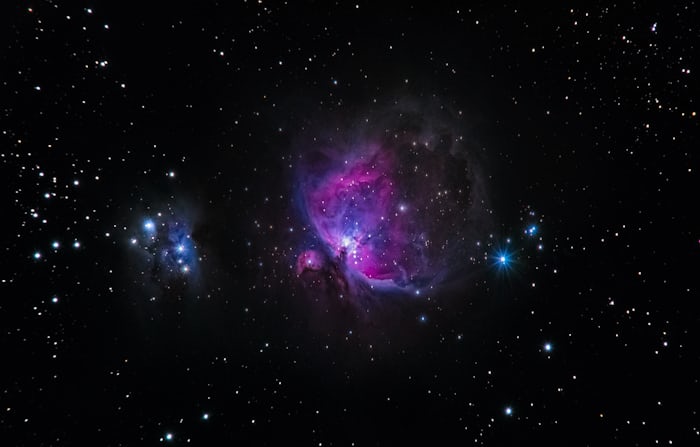Top 10 Exoplanets: Exploring the Possibilities of Life Beyond Earth

Source: Unsplash
29th June 2024 5 mins read
What are exoplanets?
Exoplanets are planets that orbit stars outside of our solar system, and the search for them has been an exciting area of research in recent years. With thousands of exoplanets discovered so far, scientists are eager to learn more about these distant worlds and their potential for supporting life.
Here are the top 10 exoplanets that have caught our attention:
1. Gliese 667Cc
Gliese 667Cc is a super-Earth exoplanet located just 22 light-years from Earth. It orbits a red dwarf star and is at least 4.5 times as massive as our own planet. This exoplanet is considered a prime candidate for hosting life due to its location in the habitable zone of its star, where temperatures are suitable for liquid water to exist.
2. Kepler-22b
Kepler-22b is a exoplanet that lies 600 light-years away from Earth. It was the first Kepler planet found in the habitable zone of its parent star, making it a promising candidate for supporting life. This exoplanet is about 2.4 times the size of Earth and orbits its star every 290 days.
3. Kepler-69c
Kepler-69c is a super-Earth exoplanet that is about 70 percent larger than our own planet. It orbits a star similar to the sun and completes one orbit every 242 days. This exoplanet is considered a potential candidate for hosting life due to its location in the habitable zone of its star.
4. Kepler-62f
Kepler-62f is a exoplanet that is about 40 percent larger than Earth and orbits a star much cooler than our sun. It is located about 1,200 light-years away and is considered a potential candidate for hosting life due to its location in the habitable zone of its star.
Advertisement
5. Kepler-186f
Kepler-186f is a exoplanet that is at most 10 percent larger than Earth and orbits a star similar to the sun. It is located about 500 light-years away and is considered a potential candidate for hosting life due to its location in the habitable zone of its star.
6. Kepler-452b
Kepler-452b is a exoplanet that is the first near-Earth-size planet that orbits around a star the size of the sun. It is located about 1,400 light-years away and is considered a potential candidate for hosting life due to its location in the habitable zone of its star.
7. Kepler-1649c
Kepler-1649c is a exoplanet that is similar in size to Earth and orbits in its star's habitable zone. It is located about 300 light-years away and is considered a potential candidate for hosting life.
Advertisement
8. Proxima Centauri b
Proxima Centauri b is a exoplanet that is located just four light-years away from Earth, making it the closest known exoplanet to our planet. It orbits the star Proxima Centauri and is considered a potential candidate for hosting life due to its location in the habitable zone of its star.
9. TRAPPIST-1e
TRAPPIST-1e is a exoplanet that is thought to be the most likely to support life as we know it. It is one of seven Earth-sized planets that orbit the ultracool dwarf star TRAPPIST-1, located about 40 light-years away.
10. 51 Pegasi b
51 Pegasi b was the first exoplanet discovered around a sun-like star and opened a new era in the search for exoplanets. It is a hot Jupiter exoplanet that orbits its star every 4.2 days and is located about 50 light-years away.
Exoplanets offer a glimpse into the possibilities of life beyond Earth. While we have yet to find definitive evidence of extraterrestrial life, the search for exoplanets continues to captivate scientists and the public alike. Who knows what other secrets these distant worlds hold?
Read Also
- How Does Heat Kill
- The Hidden Dangers of Public Phone Chargers- Why You Should Avoid Using Public Phone Chargers
- How to Stay Safe While Using Public Wi-Fi-Tips And Tricks
- The Largest Economy in the World- Top 10
- The Hidden Dangers of Credit and Debit- A Guide to Safe Financial Practice
- Building an Emergency Fund-Your Safety Net Against Debt